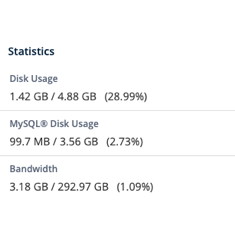My resume is now an hResume
February 20th, 2007
One of the things I took away from Web Directions North that I could actually put into use, was Microformats. These are just a formalization of the encoding of common pieces of data such as addresses and events. Most people reading this blog have probably come across a vCard file, they are sometimes attached to people’s email. An hCard is basically an HTML version of a vCard. The number of Microformats continues to grow and some large internet sites have started to get behind them.
Your LinkedIn Profile is an hResume
If you have a Flickr account then you have an hCard. If you have a public LinkedIn.com profile then you have an hResume. Some LinkedIn.com public profiles are pretty sparse, certainly not the entirety of information you would actually submit to a job application or to a graduate school.
As someone who has spent too long looking for a job, I’ve had to submit my resume in HTML format on more than one occasion. Google in particular seems to specify this. Most companies will accept Word or a subset of document formats which usually includes Microsoft Word. Although search engines have learned to index it, Microsoft Word is still not a truly open format, and it isn’t the best way to make information available online.
I’ve had my resume available online for almost as long as I’ve had a home page online, so over ten years. My thinking when marking up a resume was to use the absolute simplest HTML possible. The last time I changed the format, was when it was mandated by the Business Career Center at the Sauder School of Business. They only really cared about the formatting in MS Word and were more concerned with the wording than typography. They provided a sample resume, but not an actual Office template file, let alone one that made use of styles correctly.
I never made a Microsoft Word template for the Sauder School of Business resume format, but I did hand code some HTML that looked how they wanted and it was available online for a long time. But I don’t want it appearing in Google results as in 2019 I need to find a new and hopefully much better job. I keep my resume in sync over two formats. When I finally got around to making my resume into an hResume, I of course read the documentation, but somethings are learned better by example. Web Design is something that benefits from seeing a working example, links to several valid hResume implementations were provided. I looked at all of them, but the one that I used as a basis of my hResume was Clint Andrew Hall’s.
The main reason I chose his markup was he did not use an external style sheet and his markup was clean and minimalist. When you apply to a job, you often can only attach a single file, and if your resume relies on external style sheets and images it may render extremely poorly without them.
Minimalist Web Design
I’m a definite minimalist when it comes to web design. I code everything by hand, I hardly use any graphics, I want things to be clean and to load quickly, content is king and all that. I did introduce some more styling and formatting to my resume when I redid it. My hResume is a cross between how the BCC wants things to look in Word and how Muschamp.ca has looked for the last few years.
Write Valid HTML and CSS
Prior to redoing my resume I reverse engineered Clint’s resume and added a few additional features that I needed and others had possibly included in their hResume implementations. Hopefully I didn’t stray too far from the Microformat standard. If any Microformat gurus in the blogosphere stumble across this blog posting they can verify things for me. I did run my template through the W3C’s validator and made sure it validated. I then made sure my resume validated as well. The template won’t be modified and is possibly better source code to examine anyway. I tried to make it so it could be modified easily, my actual resume may be tweaked, I just realized all the javascript web analytics stuff is probably missing.
Test Across Browsers
Last time I tried to validate some of my HTML it was a snippet of Javascript needed for Google Analytics that made my code invalid. I’m not perfect, but I generally know what I’m doing, I keep things simple when I can but every now and then I have to put in a workaround or resort to some slight of hand. Clint uses a ‘clear’ class to aid in the layout which is something I’ve never done before but I’m familiar with the technique. My hResume and the template render fine in all the browsers I have on my Powerbook but IE 5.2 for the Mac which is a little ironic.
No one uses that browser anymore, nor old versions of Netscape, so it is pretty safe to make use of CSS in everything online even your resume. My hResume template is simpler than the code used on Muschamp.ca which makes heavy use of display: none; and any browser that doesn’t support that would render this website very badly indeed.
What are the benefits of having your resume in hResume format?
Well I’ll let you know. It might perform better in some search engines going forward. It might impress certain people and companies. This blog entry may attract some extra attention to my resume. Having nicely formatted HTML is its own reward as you never know when your website will appear on a giant screen at a conference full of web designers.
If you have any advice on HTML, CSS, or formatting resumes you can leave them below. I’ve spent too long looking for a job online and updating old blog posts which hardly anyone reads. One thing you need to consider in 2019 is how your webpage looks on tablets and smartphones. You also should consider how it looks in search engines and on social media, if you use a structured metadata format such as hResume it should help.
This entry was originaly posted on , it was last edited on and is filed under: Technology and tagged: HTML, Job Search, LinkedIn, Resume, Structured Metadata.





6 CommentsLeave A Comment Now